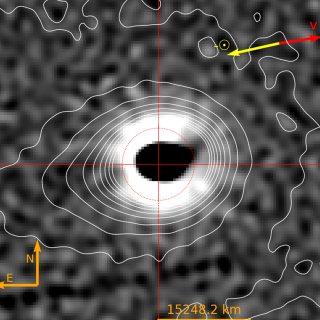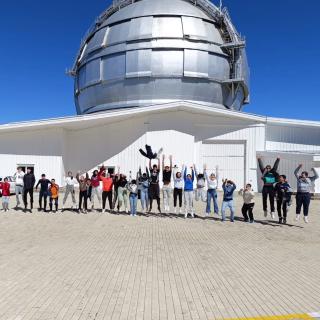We present an analysis of the UVES high-resolution spectroscopic observations at the 8.2m VLT of J0023+0307, an extremely iron-poor dwarf star. We are unable to detect iron lines in the spectrum but derive [Fe/H]< −6.1 from the Ca II resonance lines assuming [Ca/Fe]=0.40. The chemical abundance pattern of J0023+0307, with very low [Fe/Mg] and [Ca/Mg] abundance ratios, but relatively high absolute Mg and Si abundances, suggests J0023+0307 is a second generation star formed from a molecular cloud polluted by only one supernova in which the fall-back mechanism played a role. We measure a carbon abundance of A(C) = 6.2 that places J0023+0307 on the “low” band in the A(C)−[Fe/H] diagram, suggesting no contamination from a binary companion. This star is also unique having a lithium abundance (A(Li)=2.02±0.08) close to the level of the Lithium Plateau, in contrast with lower Li determinations or upper limits in all other extremely iron-poor stars. The upper envelope of the lithium abundances in unevolved stars spanning more than three orders of magnitude in metallicity (−6 <[Fe/H]< −2.5) defines a nearly constant value. We argue that it is unlikely that such uniformity is the result of depletion processes in stars from a significantly higher initial Li abundance, but suggests instead a lower primordial production, pointing to new physics such as decaying massive particles, varying fundamental constants, or nuclear resonances, that could have affected the primordial 7Li production.
Advertised on
Authors
David S. Aguado
Jonay Isaí
González Hernández
Carlos
Allende Prieto
Prof.
Rafael
Rebolo López
References
![LithiumJ0023-1 Li abundance, A(Li), versus metallicity, [Fe/H], of the extremely iron-poor dwarf star J0023+0307 compared with other dwarf stars (logg ≥ 3.7) with Li abundance values from Bonifacio et al. (2018) and references therein. Blue filled circles connected with a solid line indicates the spectroscopic binary systems in González Hernández et al. (2008) and Aoki et al. (2012). The Lithium “plateau” (also called Spite Plateau) reference is shown as a solid line at a level of A(Li) = 2.20 dex. Blue dashed line repres](/sites/default/files/styles/crop_rectangle_21x9_to_1280/public/images/news/Webp.net-resizeimage_0.jpg?itok=D_hIH6Pu)


